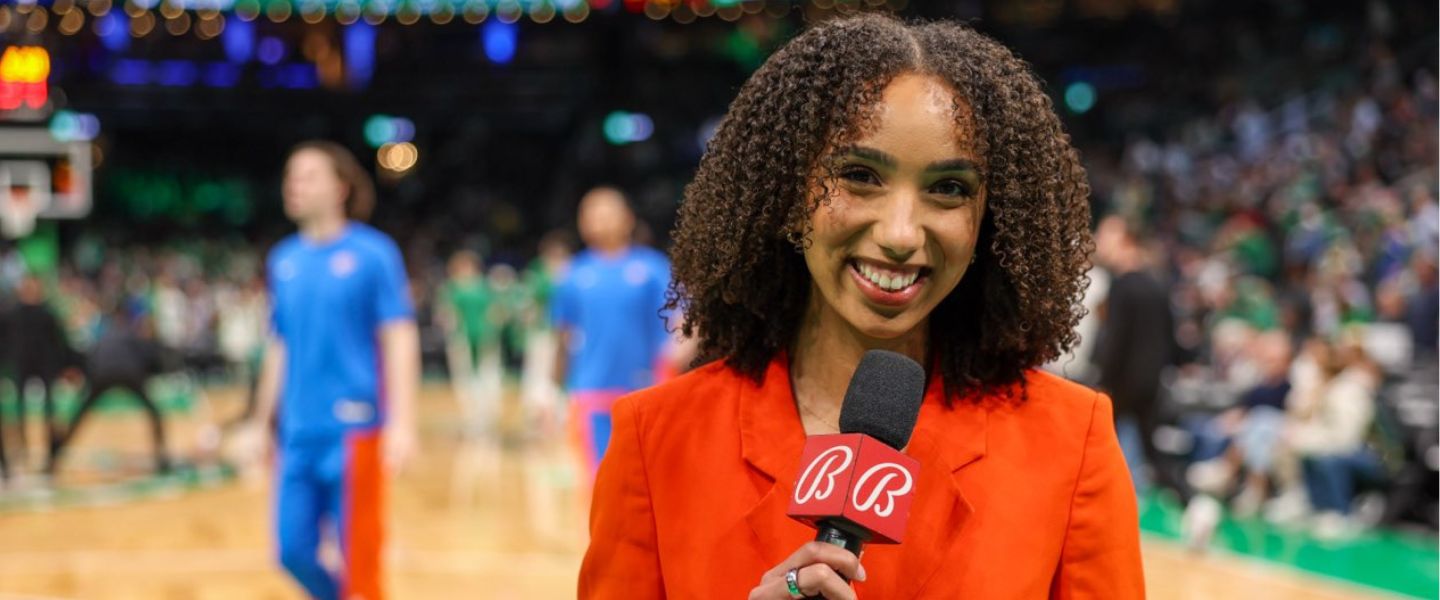Inside Lawson’s basketball journey on the court and on the mic
Mass communications alumna Paris Lawson (’19) is living out the dream many sports fanatics would give anything for — broadcasting for a professional team. Lawson joined the Oklahoma City Thunder after graduating from Belmont. She works as the NBA side’s digital reporter where she hosts the Thunder’s pregame and postgame shows, regularly features players in the team’s digital content and occasionally fills in as OKC’s broadcast analyst during games.
In an interview with Belmont University, Lawson shared what she learned, some of the hardships she faced along the way (including three separate ACL tears as a player), the advice she would give to aspiring sports broadcasters and some highlights from her time in OKC so far.
Where did your love for basketball come from and how did you foster it as you grew up?
“I always grew up loving basketball. It was the first sport that I really connected with and I started playing when I was probably five or six years old. My dad always tells this story — when I was first starting as a kid, we went to the gym together and just shot around. At one point a few weeks later, I ran into his bedroom at 6:30 a.m., woke him up and asked when we were going to the gym again. I latched on to basketball early on.
I was also relatively tall for my age growing up, so I feel like I was always perfectly positioned to play basketball. Watching basketball then became a passion of mine as I got into the WNBA and college basketball. What's hilarious is that I grew up dancing just as seriously as I played basketball. Those were my two passions. I remember one day, my mom sat me down when I was about to start competitive dance and I was about to join an AAU basketball team. She said, ‘Sweetheart, unfortunately, both of these seasons overlap. You're going have to choose one.’
I felt like that was the hardest decision I ever had to make. Obviously, I ended up choosing basketball and thank goodness I did. From middle school on, it was all basketball year-round through high school and until I started playing at Belmont.”
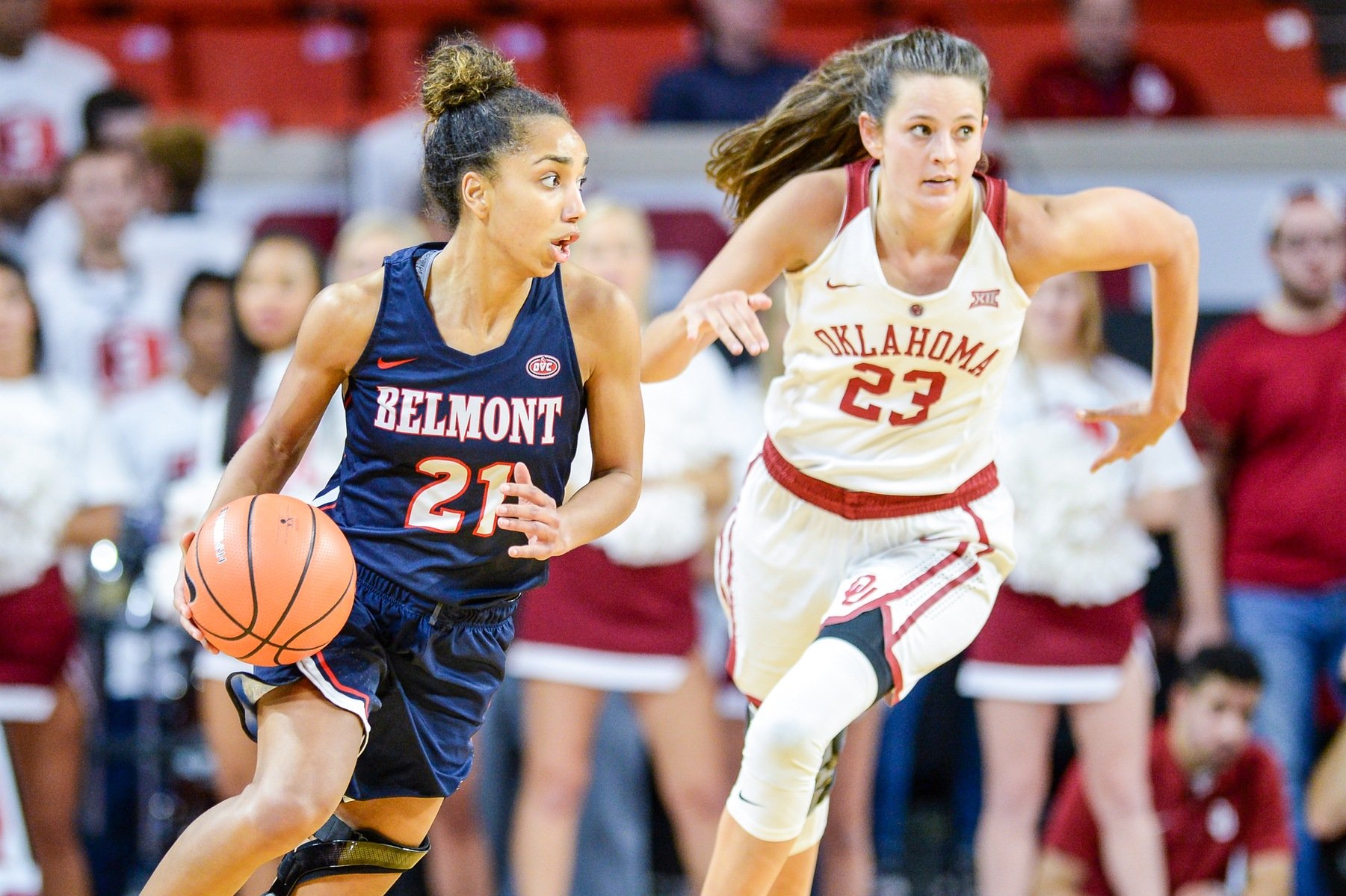
Was playing professionally ever something you considered, or was broadcasting always the route you wanted your career to go?
“I always knew I wanted to go into broadcasting. That was never a question. When I went into college, I thought I would grow, get better, get stronger and just see how far basketball took me. My knees had other ideas as I ended up suffering three ACL tears. Luckily, I was at Belmont and I was able to get all of the broadcasting experience I did before I graduated after basketball was taken away from me.
Growing up and watching basketball, I always loved broadcasters like Holly Rowe, Maria Taylor, Doris Burke — I was looking up to all of those women and saying, ‘I can do that. I want to do that. That looks like so much fun.’ That was always the goal for me, and that's why I majored in mass communication, and once Belmont added a sports and media minor, I was ecstatic.”
What broadcasting roles and other experiences were you able to secure while at Belmont?
“The first sport that I sideline reported for was Belmont volleyball on the Bruin Sports Network at the time. Later on, I was able to do soccer, baseball and eventually sideline for men’s basketball on ESPN+. I also applied for an internship at Nashville Soccer Club and worked closely with their broadcast department. I made sure their broadcasters had their ad reads and that kind of thing. One gameday, their sideline reporter got strep throat and they said ‘Hey Paris, you do sideline reporting, right?’ and I was afforded this magical opportunity to sideline for a professional team while I was still in college. I’m glad I was wearing pants and not a dress because my knees were literally shaking when I was interviewing head coach Gary Smith.
 The thing that really changed the game the most for me was Belmont’s Assistant Athletic Director for Athletic Video Operations, Christian Sadler. I got to know him from my Belmont gameday roles and I would just go post up in his office and just sit there for hours. I would sit behind him and watch him edit videos for the website or socials. Sometimes he would ask if I could run cameras for a volleyball game the next day or help with graphics for a softball game, and that’s what really got me started.
The thing that really changed the game the most for me was Belmont’s Assistant Athletic Director for Athletic Video Operations, Christian Sadler. I got to know him from my Belmont gameday roles and I would just go post up in his office and just sit there for hours. I would sit behind him and watch him edit videos for the website or socials. Sometimes he would ask if I could run cameras for a volleyball game the next day or help with graphics for a softball game, and that’s what really got me started.
Those sit ins turned into a weekly show called ‘This Week in Belmont Athletics,’ where I started getting camera reps as a student. I was covering sports, doing interviews around the Curb and other things that may not have seemed like a big deal. But for me, as someone who was aspiring to be on camera and be a TV personality, those reps were the most valuable thing that I ever could have had in that portion of my career. Lots of people that do what I do don't get those reps until after they graduate.
Another thing that was huge for me was when Greg Sage, Associate Athletic Director for Broadcasting & Media Relations, got me an incredible opportunity to work with News Channel 2 in Nashville to be their guest correspondent for March Madness. So Christian and I were there putting together real TV news packages throughout March Madness for the women's teams. That was my first taste into what news coverage looked like. I never asked Greg to reach out to them, he just did it.”
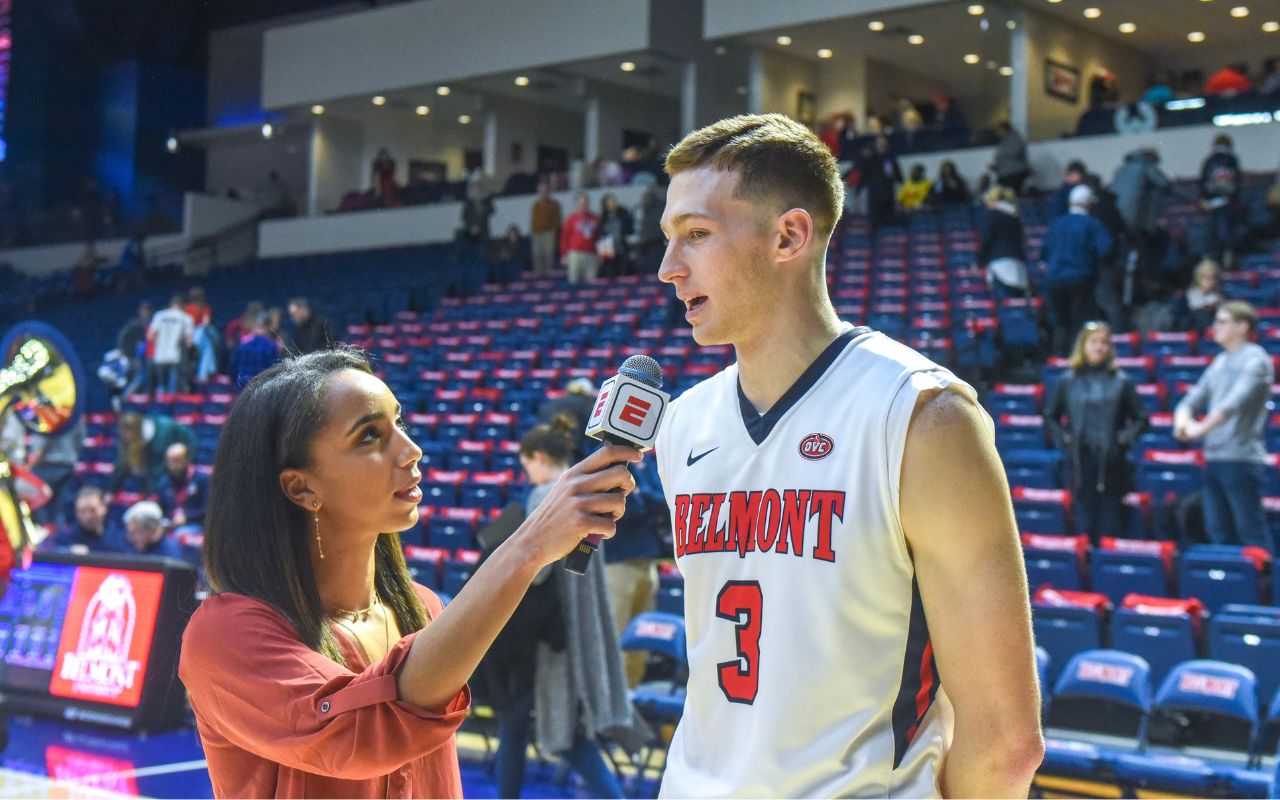
How did you find an opening with the Oklahoma City Thunder and what did that application process look like?
I graduated in May without anything lined up after graduation because I honestly didn’t make the decision that I was leaving Belmont until I suffered my third ACL tear in my second-to-last semester of undergrad. Up until that point, I had every intention of returning to Belmont, getting my master's degree and continuing to play basketball. But once I tore my ACL the third time, I had to really look at my life and be like, ‘Okay, what do I want to do here, because clearly my knees are trying to tell me something’.
Ultimately, I decided not to go back for a fifth year, and without a job, I poked around TeamWork Online and applied to every digital reporter role. I wanted to stay in basketball, so my options weren't particularly far and wide. I applied for my job with the Thunder on TeamWork Online, probably in late May after graduation, and I didn't hear back from them until late July or early August.
During that stretch, I was coaching eighth grade girls’ basketball in Nashville and was ready to maybe dive into coaching full-time or see if any of the news stations around town were hiring. But then I got the call from the Thunder, and I remember thinking how crazy it was that an NBA team was calling me, a 22-year-old fresh out of college. It felt too good to be true, but obviously it worked out.”
What does your day to day look like during the NBA season with the Thunder?
“During the week, it’s lots of interviews, writing stories and taking copious amounts of notes. I’ll coordinate with our content, video and photo teams, social team and web team to make sure everyone knows what needs to be posted and that we have enough content. I try to get as much rest as I can between organizing quotes and attending media availabilities to make sure that I have storylines prepared for the next game.
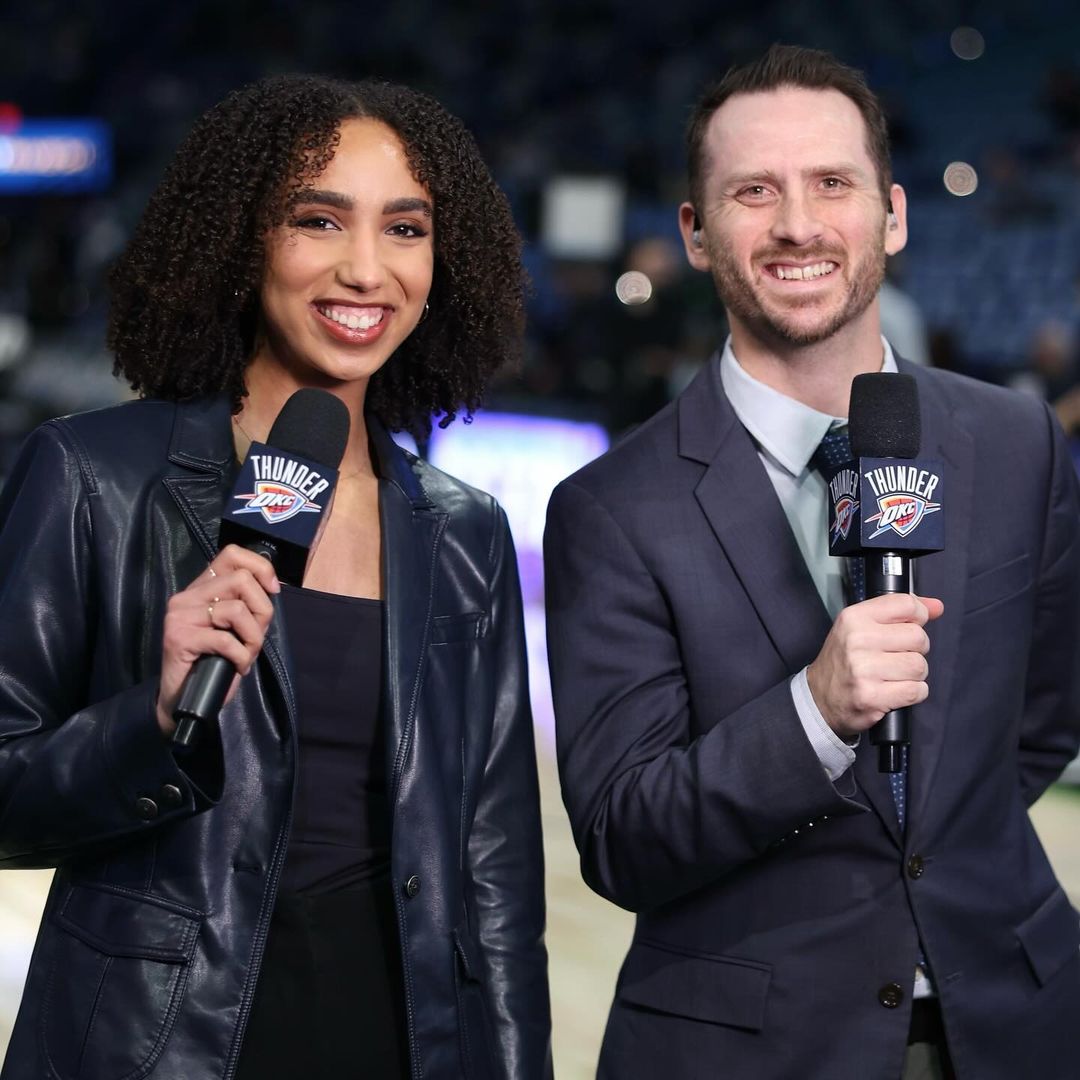 My typical gameday starts with a team shootaround in the morning where I will talk to players I need to talk to, then I'll go home and get on a call with our TV producer. I host the Thunder pregame show on our broadcasts, so on that call, we’ll go over the pregame show rundown for our next game. I make sure that we have our talking points, script, all that stuff.
My typical gameday starts with a team shootaround in the morning where I will talk to players I need to talk to, then I'll go home and get on a call with our TV producer. I host the Thunder pregame show on our broadcasts, so on that call, we’ll go over the pregame show rundown for our next game. I make sure that we have our talking points, script, all that stuff.
In the afternoon, I head to the arena. I'll attend our pregame media availability with our coach, talk to the opposing team’s coach and then I scramble to down as much food as I can since I won’t be eating for the next five hours. Then I start the pregame show. From there, I’m basically on air for the next three hours — I host our pregame show, and then I run downstairs to trade out my mic, sideline report during the game, then I switch out my mic again and I host the postgame show.
Game days are wild. They’re hectic, but it’s the most fun part of the job, honestly. Every time our producer starts counting down in my ear, I'm like, ‘Oh yeah. It's go time. This is what I was been working for.’”
What is the coolest part of your job that you still haven’t gotten over in almost five years of this job?
“Honestly, the coolest part is that my literal job is to follow around an NBA team and tell people about it. That's what I get paid to do. I talk about basketball full-time, and that's the sport I grew up playing — it’s what I know like the back of my hand. There are a lot of difficult parts about it. I'm hardly home throughout the regular season and I’m on the road at least once a week. I don't get to see my family a ton. But for every hard thing, the fact that my job is to cover the sport that I love on a daily basis makes up for it. You can’t script it any better, and I just feel so blessed and fortunate that this is my life.
When those difficult things arise, I’m able to tell myself ‘You know, I'm talking basketball today. What are we what are we complaining about, Paris? Let’s go.’”

Photo: Xander Dawson, courtesy of Paris Lawson
What was the 2023-24 season like with OKC finishing as the No. 1 seed in the Western Conference and winning the first playoff series you have been a part of?
“Throughout the season as we were winning, the energy around the organization was very similar to what it had been in years past when the results were not what we hoped for. And that's not an indictment on this season, it's really praise towards how the group acted and approached every single day these last four years, even when we weren't winning much. Everyone is very positive and very upbeat — the players practice every day with the same energy. 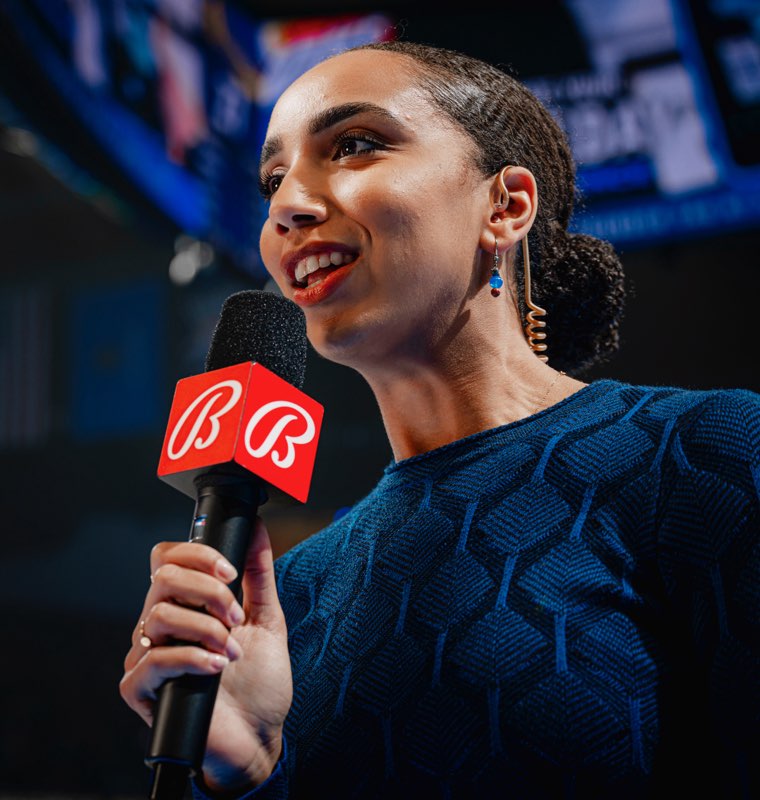
But what was really different was the atmosphere in the arena. I joined the Thunder in 2019, the year they traded Russell Westbrook and brought in Chris Paul. That was the start of the rebuild process, so I had never experienced playoff basketball in Oklahoma City, I had only heard about it. But people just kept talking about the old playoff days like some sort of magical lore. I would always hear stuff like, ‘Man, there's nothing like playoff basketball in Oklahoma City. They're so different, the crowd is so crazy.’ I always thought, ‘Ok yeah, sure, I know people get excited for the playoffs, I can imagine it.’
But last year — I promise you, I've never experienced anything like it in that arena. I've never heard an arena louder than when I heard it during playoff basketball in Oklahoma City. In Game 1 against the Pelicans in OKC, every single person was wearing that white XL t-shirt that is laying on the back of every seat in the arena when they walk in. I mean everyone. I’ve never seen that in another arena, ever. Everyone was doing the chants. Everyone was yelling and screaming — they were barking. The energy was unmatched.
I remember sitting there unable to hear our producers talking in our ear. I could barely hear anything. My ears were ringing after, and I just remember sitting there and smiling so big. I had the best seat in the house during a playoff basketball game. I was experiencing what everyone had been talking to me about since I got here.”
What advice would you give to anyone looking to break into the sports industry?
“The thing that I always go back to is never say no to an opportunity, no matter how small it is. I grew up playing basketball — I never watched a softball game growing up, I did not enjoy baseball growing up. I didn't enjoy soccer. It was literally basketball or nothing for me, and basketball was the last sport that I ended up covering at Belmont on air. I started with volleyball, then I went to soccer, then I went to baseball, then it was softball, then it was basketball. If I hadn't pushed myself and gotten out of my comfort zone to do things that maybe weren't my favorite sport, I wouldn't be able to step into and say ‘yes’ to the role I actually wanted.
I wouldn't have been prepared because I needed to understand what goes on in a TV truck to sideline report, and I needed to be able to write before I could cover an NBA team full-time. Even if its not exactly what you want to do, take every experience for what it is — they all offer value.
Also, as frustrating and deflating as it can be to hear ‘no’ so many times, stick with what you want to do and be willing to do stuff you don't want to do. You never know how it'll turn out. When you have all these different experiences on your resume, suddenly you look like a very well-rounded person who can do a lot of different stuff. Don’t think any experience is beneath you.”

Photo courtesy of Paris Lawson and the Oklahoma City Thunder
Beyond the athletics side, how did Belmont help prepare you for the role you are in today?
“Belmont helped at every turn because there was always someone to help me with anything I needed, no matter what it was. Beyond Christian and Greg, folks like my professor and advisor Dr. Rich Tiner, who was the most encouraging human being on the planet, was so valuable to have as a sounding board and encourager. Or I could reach out to Dr. Sybil Brown for help on a piece I was writing or for advice.
Of course there was my coach, Bart Brooks, and my teammates who always had my back. I felt so confident, comfortable and well taken care of. I felt like I couldn’t fail. So yes, the opportunities I got at Belmont were extraordinary, but it was really the people and the community that made me feel the most confident going into my career. I feel like I would have been successful in any direction that I went because of them.”
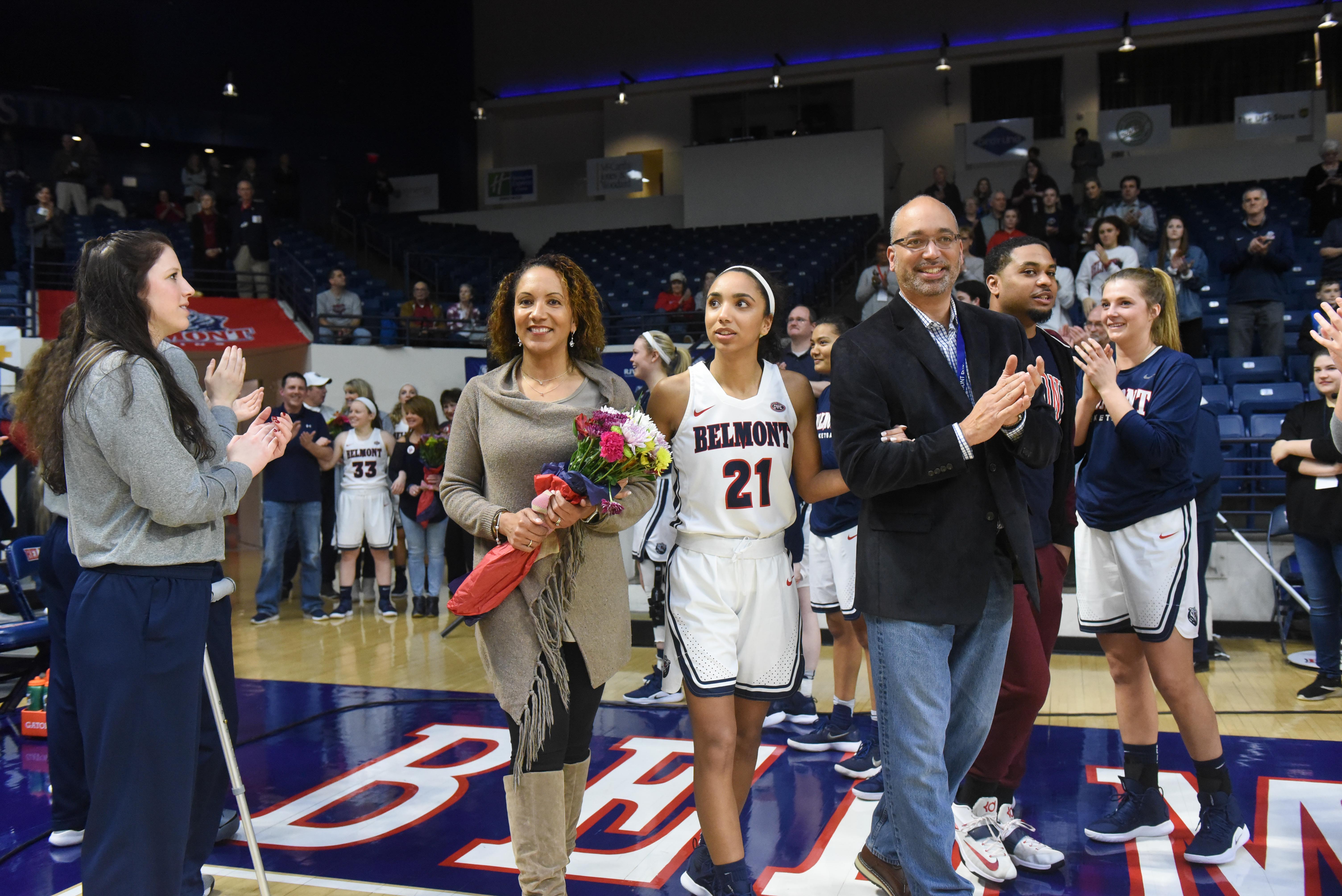
Photos courtesy of the Oklahoma City Thunder, Belmont Univeristy
Learn More
Learn more about Belmont's communication studies program.

